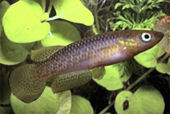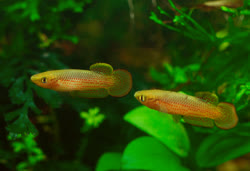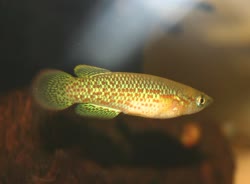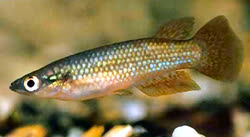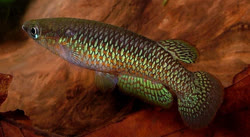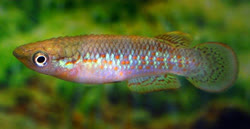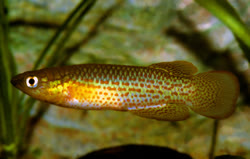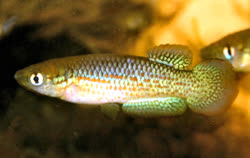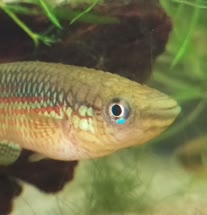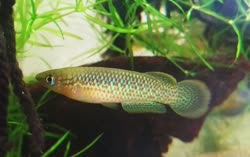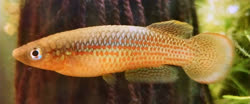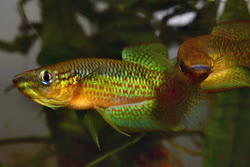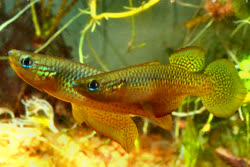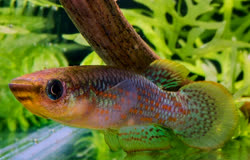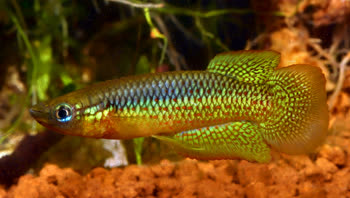|
|
Following Loiselle (2006) it is diagnosed as follows: maxilla relatively immobile, bound at its posterior end to the preorbital by a fold of skin; premaxillary ascending processes flat and broad, tapered posteriorly and not overlapping in the midline; presence of a single pair of tubular nares; refelective pineal spot absent; squamation in anterior portion of body of the ‘E-type’ (sensu Hoedemann, 1958) with prominent ‘H-type’ scales; lateral line not present although some large specimens possess a shallow pit in the centre of some scales; papillae on scales and fin rays absent; haemal arches not expanded and haemal spines without pleural ribs; in adults hypural plates fused to form a hypural fan, with the join lines visible in juveniles; caudal-fin rounded to truncate with the central rays never extended; basal third to three-quarters of caudal-fin heavily-scaled, the scales in straight rows one scale wide, each series on the interspace between two rays; caudal-fin without a median lobe; filamentous extensions of the dorsal and caudal-fins variably present in males; dark gular bar variably present; no cross bars on the body; no dark spot at base of caudal-fin in males, variably present in females. Molecular analysis suggests this genus represents the least evolved killifish known from which a large percentage of killifish are derived from. Unlike the true annual killifish, they live as long as similar fishes, a few years, 3 years is not uncommon 5 is unknown. Discovered by Robert Playfair in the Seychelles in 1863 the species was described as Haplocheilus playfairi by Gunter in 1866 and were moved to Pachypanchax by Myers in 1933; first kept in aquaria in France in 1867 (but not successfully, they died without reproducing) from a collection by Edward Wright.
Catalog of Fishes
playfairii, Haplochilus Günther [A.] 1866:314 [Catalogue of the fishes in the British Museum v. 6; ref. 1983] Seychelles. Syntypes: BMNH 1864.11.15.91-93 (3 or 2), 1865.3.18.100-101 (2), 1866.1.19.40-43[or 70-73] (4), 1866.1.19.63-69 (7 or now 5), 1867.8.16.24-25 (2); MSNG 9297 (1); USNM 12611 (10); ZMB 6085 (2). Type catalog: Paepke & Seegers 1986:162 [ref. 19981]. •Valid as Pachypanchax playfairii (Günther 1866) -- (Parenti 1981:473 [ref. 7066], Wildekamp et al. 1986:275 [ref. 6198], Poll & Gosse 1995:211 [ref. 24781], Seegers 1997:16 [ref. 23895], Murphy & Collier 1997:797 [ref. 25585], Lazara 2001:245 [ref. 25711]). Current status: Valid as Pachypanchax playfairii (Günther 1866). Aplocheilidae. Distribution: Seychelles. Habitat: freshwater, brackish. Further References
|


